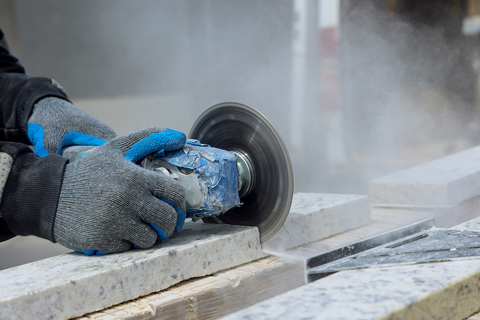Workers’ compensation due to silicosis – your rights in Queensland

Silicosis is a serious lung disease caused by breathing in crystalline silica dust, common in industries like construction, mining, and manufacturing. If you’ve been diagnosed with silicosis because of work exposure in Queensland, you may be entitled to compensation under the state’s workers’ compensation laws.
This article explains what silicosis is, how it affects workers, and how to make a workers’ compensation claim in Queensland. We’ll cover eligibility, the claims process, and what benefits might be available.
What is silicosis?
Silicosis is a type of lung disease caused by inhaling fine silica dust particles. Silica is a mineral found in materials like sand, stone, concrete, and bricks. When workers cut, drill, or grind these materials, they can breathe in tiny silica dust particles that cause lung damage over time.
Key facts about silicosis
-
- It is preventable but incurable.
- Symptoms may include shortness of breath, coughing, and chest pain.
- It can develop years after exposure, even if you’ve left the job.
Queensland’s workers’ compensation scheme: an overview
In Queensland, workers’ compensation is governed by the Workers’ Compensation and Rehabilitation Act 2003 (Qld). This law covers most employees, contractors, and labour hire workers.
Key points
-
- Employers are required to have workers’ compensation insurance.
- The main insurer is WorkCover Queensland, though some large employers are self-insured.
- Workers who suffer from a work-related injury or disease (including silicosis) can claim compensation.
Am I eligible to claim workers’ compensation for silicosis?
You may be eligible for a workers’ compensation claim in Queensland if:
- you were exposed to silica dust in the course of your employment in Queensland;
- a medical professional has diagnosed you with silicosis (either simple, accelerated, or complicated);
- your employment was a significant contributing factor to your condition.
Even if you’re no longer working for the employer where the exposure happened, you can still make a claim.
How to make a workers’ compensation claim due to silicosis
Here’s a step-by-step guide to lodging a claim for silicosis in Queensland.
Seek medical attention
-
- See your GP or a specialist (like a respiratory physician) to get a proper diagnosis.
- Ask the doctor to complete an ‘approved’ medical certificate that confirms your silicosis diagnosis and its link to your work.
Notify your employer
-
- Let your employer know about your condition as soon as possible.
- If you’re no longer working there, you should contact WorkCover Queensland directly.
Lodge a claim
-
- Complete a workers’ compensation claim form (available on the WorkCover Queensland website).
- Attach your medical certificate and any supporting documents.
- Submit the claim to WorkCover Queensland (or the self-insurer if applicable).
Assessment and decision
-
- WorkCover will investigate your claim, including reviewing the medical evidence and your work history.
- You may be asked to attend an independent medical examination.
You can learn more about the process of making a claim in our earlier blog, “How to claim workers compensation in Queensland”.
What benefits can I receive?
If your claim is accepted, you may be entitled to:
- Weekly compensation payments: if you’re unable to work or working reduced hours. You can read more about this in our earlier blog, “A guide to workers’ compensation weekly payments Queensland”.
- Medical expenses: including treatment, medications, rehabilitation, and travel costs.
- Permanent impairment compensation: a lump sum payment based on the level of permanent disability. You can read more about this in our earlier blog, “WorkCover lump sum compensation claims Queensland”.
- Common law damages: where applicable, see below.
Can I also claim common law damages?
If your silicosis resulted from employer negligence (such as failure to provide adequate dust control measures), you might also have a common law claim for damages. This type of claim can compensate you for pain and suffering, future loss of earnings, and other losses.
Important note
-
- You must first have a workers’ compensation claim accepted and/or have received a Notice of Assessment before you can pursue a common law claim.
- Strict time limits apply. The law relating to limitation periods for ‘dust diseases’ is slightly different from other types of ‘personal injury’ claims, but you still need to take steps fairly quickly from the date of diagnosis or from when you first knew your condition was work-related, in order to protect your rights to sue for your silicosis condition.
You can read more about your options if your employer’s negligence resulted in your injury/illness in our earlier blog, “Common law claims when injured at work in Queensland”.
Time limits for making a workers’ compensation claim in Queensland
Time limits can vary depending on your specific circumstances.
- Workers’ compensation claims generally need to be lodged within six months of diagnosis.
- Extensions may be possible if there is a reasonable cause for the delay.
Tip: It’s best to seek legal advice or contact WorkCover Queensland promptly to avoid missing deadlines.
Support services available
Silicosis claims can be complex, especially if you’ve worked for multiple employers or in different states. If you’re unsure about your eligibility or your entitlements, consider:
- contacting WorkCover Queensland on 1300 362 128;
- speaking to a lawyer who specialises in workers’ compensation.
Get help from a workers’ compensation lawyer
Silicosis is a devastating but preventable disease. Queensland workers exposed to silica dust have important legal rights under state workers’ compensation laws.
If you’ve been diagnosed with silicosis, don’t wait. Get medical advice early and speak with a workers’ compensation lawyer about your legal options. We have significant experience with the Queensland workers’ compensation system and provide free initial advice, so it costs you nothing to find out where you stand.
Contacting Cameron Hall Lawyers
Compensation Lawyers Brisbane & Darwin
This article is of a general nature and should not be relied upon as legal advice. If you require further information, advice or assistance for your specific circumstances, please contact us.
